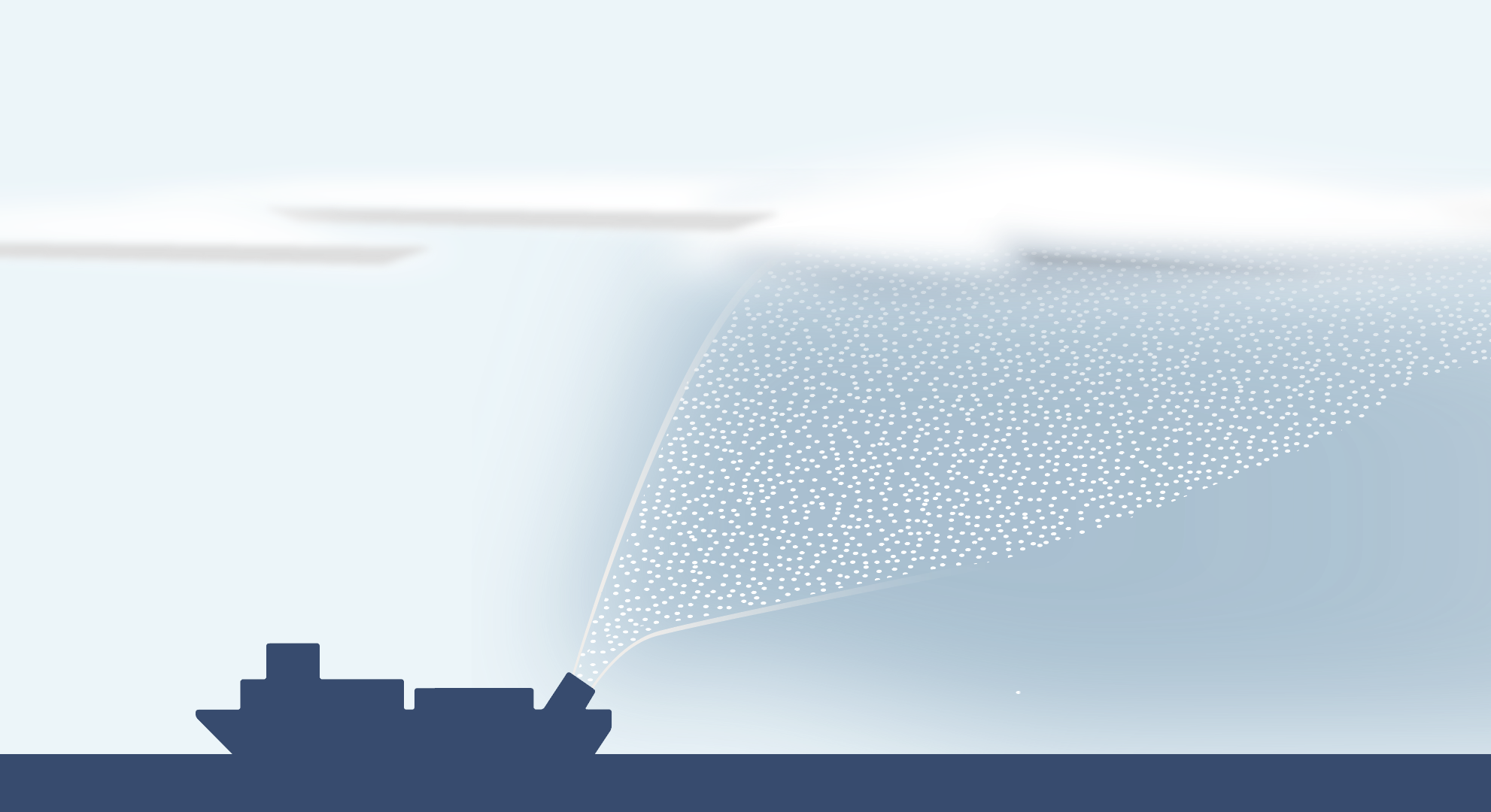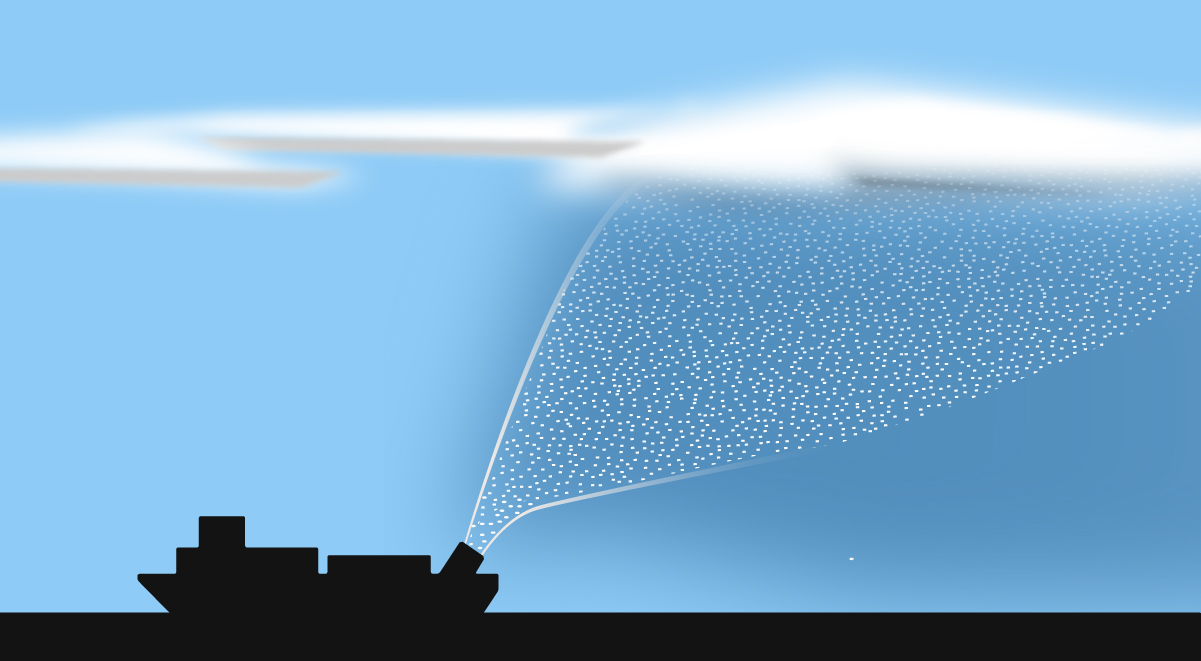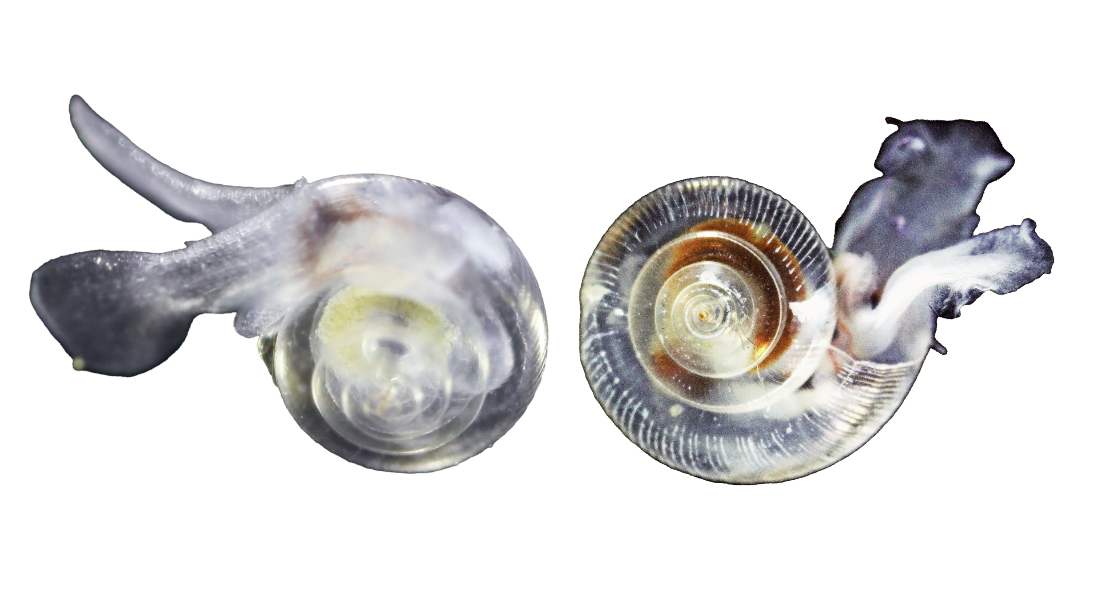Video
Marine Cloud Brightening
Marine Cloud Brightening – or MCB – is an idea to brighten clouds over the ocean to reflect more sunlight back to space. How could it work and why is it being studied?
Transcript
0:00
Marine Cloud Brightening – or MCB – is a proposal to brighten clouds over the ocean to reflect more sunlight back to space(1).
But how can we brighten clouds?
0:14
Cloud droplets don’t start from scratch; they grow around tiny particles suspended in the air(2), known as aerosols.
By spraying sea-salt from special ships, Marine Cloud Brightening would add more aerosol particles to the air. This would cause clouds to form a larger number of smaller cloud droplets which would make these clouds more reflective(3,4).
And we know this should work: polluting ships leave bright tracks in clouds as they pass.
0:41
However, aerosol-cloud interactions are complex(5) which is why some researchers are running field experiments(6) to test whether this would work in practice. The real-world data from these experiments would also have broader value, helping us to better understand how other aerosol particles affect clouds.
1:02
Marine Cloud Brightening may have the potential to greatly reduce temperature in some ocean regions, and it might be scaled up to have a significant global cooling effect, offsetting many climate risks(1).
However, it could also change rainfall patterns and worsen some climate extremes(6).
1:22
Could MCB play a role in the fight against climate change? At this stage, scientists are not sure.
To decide whether it should, the world will need to know much more.
Endnotes
- Latham J, Bower K, Choularton T, et al. Marine cloud brightening. Philosophical Transactions of the Royal Society A: Mathematical, Physical and Engineering Sciences 2012; 370: 4217–4262.
- How Clouds Form, https://www.noaa.gov/jetstream/clouds/how-clouds-form (2023, accessed 21 November 2024).
- Diamond MS, Director HM, Eastman R, et al. Substantial Cloud Brightening From Shipping in Subtropical Low Clouds. AGU Advances; 1. Epub ahead of print March 2020. DOI: 10.1029/2019av000111.
- Twomey S. Pollution and the Planetary Albedo. Atmos Environ 1974; 8: 1251–1256.
- Ackerman AS, Kirkpatrick MP, Stevens DE, et al. The Impact of humidity above stratiform clouds on indirect aerosol climate forcing. 2004.
- Feingold G, Ghate VP, Russell LM, et al. Physical science research needed to evaluate the viability and risks of marine cloud brightening, https://www.science.org (2024).



